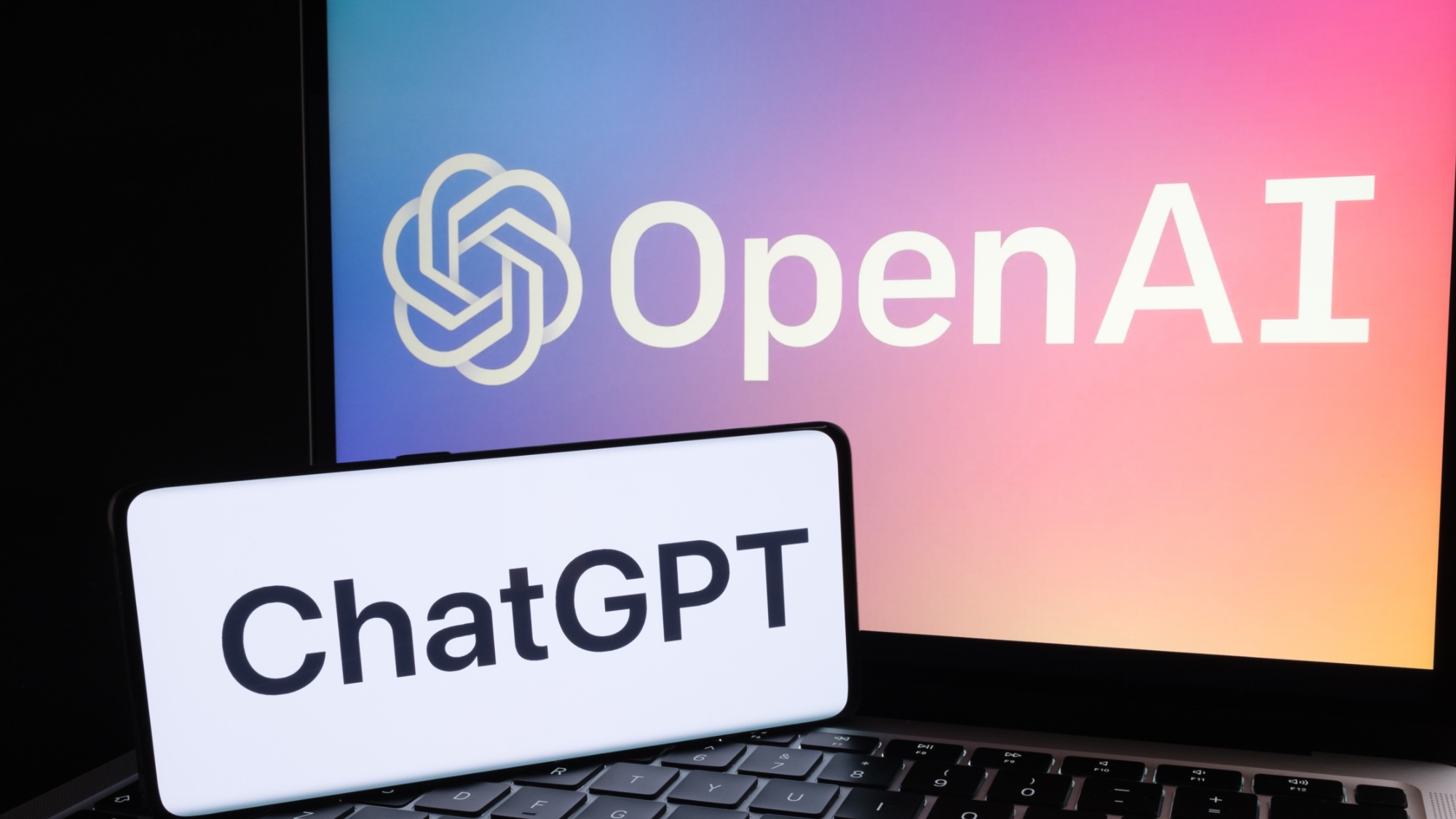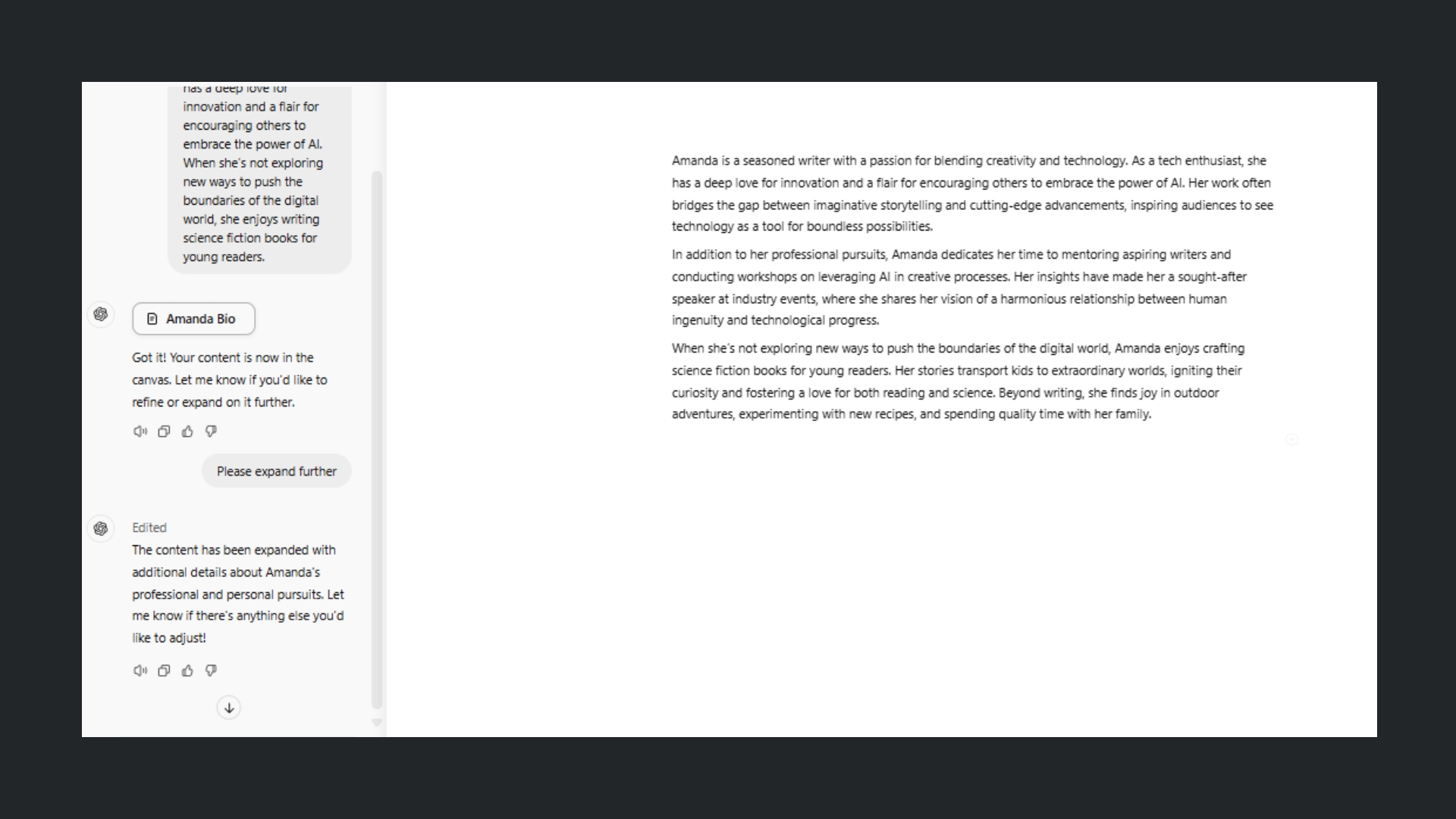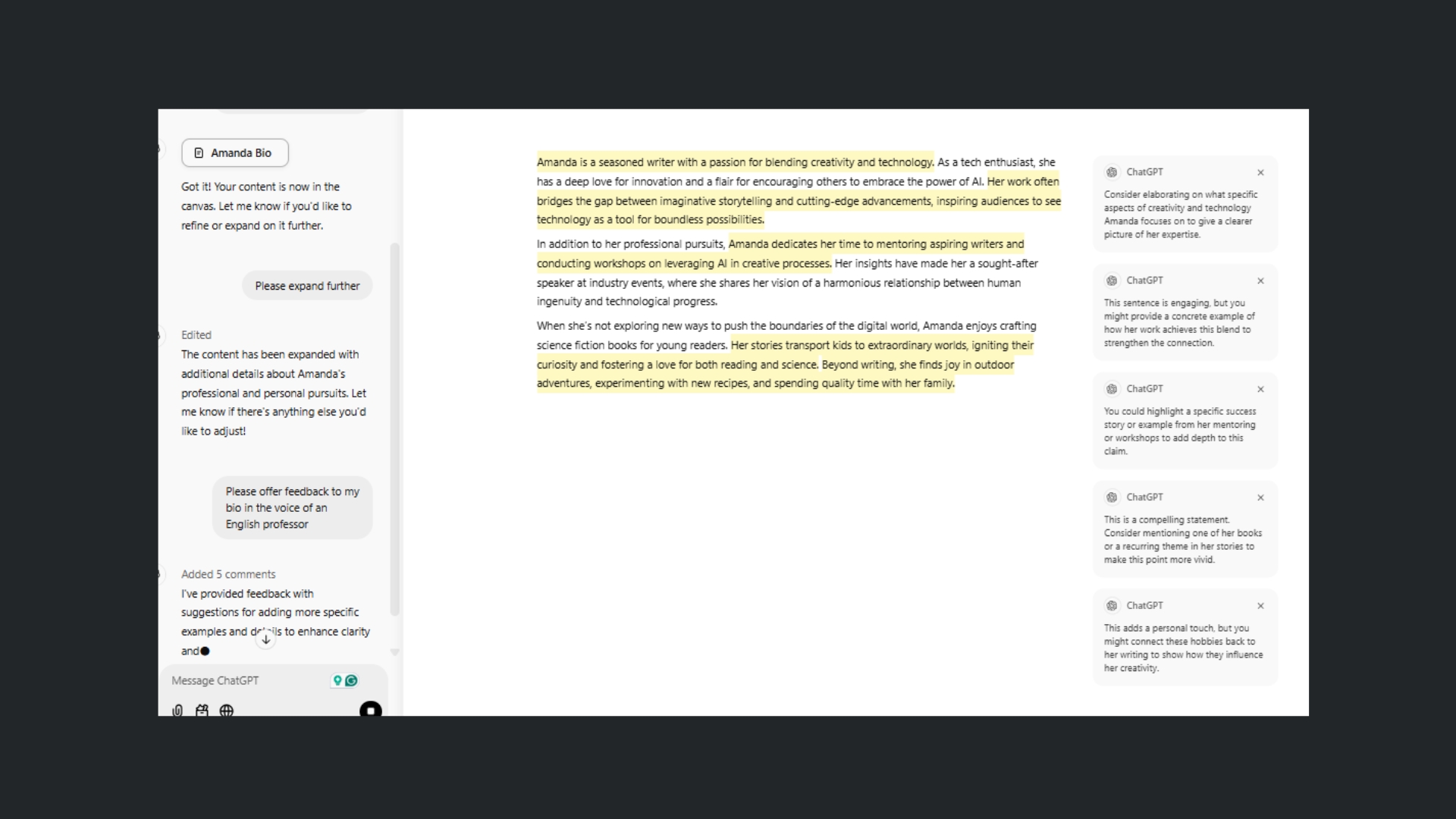Forget Google Docs — I just went hands-on with OpenAI Canvas and it's actually better
It's the real-time editor we've been waiting for

OpenAI just officially launched Canvas, and I couldn’t wait to try it. The latest from OpenAI brings a new level of interactivity and collaboration to ChatGPT. No longer in beta, Canvas is now available to all users, regardless of tier — for free — providing a powerful AI-first writing and coding editor built directly into ChatGPT.
The first thing I noticed was that Canvas transforms ChatGPT from a simple chat assistant into a collaborative partner for writing and coding projects. By opening a dedicated workspace, I was able to start a draft on the page or upload text. From there, I could edit and refine text or code in real time. Whether you’re brainstorming ideas, editing a report or debugging complex code, Canvas offers a seamless, AI-driven experience with a real-time AI editor.
Users can either start their project directly in Canvas or transition from a chat conversation by typing “use Canvas.” Since the beta preview, Canvas has announced more features, offering flexibility that bridges the gap between conversational AI and traditional document editing tools, potentially offering the best of both worlds.
AI-powered editing

After I added my draft, I was able to ask ChatGPT for targeted improvements, rephrasing or expansions. With my text in Canvas, the editing features highlighted specific sections of code or, in this case text.
The grammar polishing feature was actually more efficient than Grammarly because it seemed to understand the flow of my writing better. Canvas grasped the nuances of my work, better than any other grammar editor I've seen.
As a writer, I am always looking for better ways to improve my writing and this AI-powered editing feature makes it easy. Whether I want to refine a paragraph or adjust the tone for a specific audience, I’m able to do that without leaving the editor. It was such a game-changer to write and then get the edits I needed immediately.
In this example, I used a bio blurb and asked Canvas to expand it. Within seconds, it effortlessly offered a more in-depth bio for me to use on LinkedIn, Tom’s Guide, my website or really any other place I may need a bio. Most people will find this feature helpful when certain sites require a specific word count, tone or angle. Canvas can help shape the text precisely in the direction you want to take it.
Unique features like the "pop-out writing button" provide options to tailor text length, tone, and even audience. Canvas also includes a “final polish” button to refine grammar, improve clarity, and ensure the text is concise and professional.
I felt the grammar polishing feature was actually more efficient than Grammarly because it seemed to understand the flow of my writing better. Canvas grasped the nuances of my work, better than any other grammar editor I've seen.
Unlike Grammarly applications that extend within the browser, I can choose whether or not I want my writing to be edited, rather than it automatically occurring. I found this to be an incredibly handy tool and look forward to using it more when writing and fleshing out my science fiction novels.
Editing advice from various perspectives

Another unique feature Canvas offers is offering editing advice from different perspectives. For example, I asked it to edit my bio from the perspective of an English professor. From there, I received several different comments highlighting various parts of my bio. Users could try asking for editing advice from a New York Times best-selling author, a rocket scientist, or a plethora of other perspectives.
This editing feature is extremely helpful to understand how your writing appears to different people and from different perspectives. From there, users can change the tone, the voice and the reading level so the writing can fit seamlessly into the context whatever the scenario.
Canvas combines the best elements of tools like Google Docs, Microsoft Word and coding environments such as VSCode, but with AI at its core. Unlike other platforms where AI acts as an add-on, Canvas integrates AI deeply into the user experience, making it feel like a true collaborator rather than just a tool.
While similar features exist, such as Anthropic’s Claude Artifacts or Google’s Gemini tools, Canvas goes further by enabling real-time editing and collaboration directly within the workspace. It’s not just about viewing AI outputs — it’s about engaging with them.
Advanced coding capabilities

The advanced coding capabilities from Canvas allow ChatGPT to shine as a coding assistant. Users can debug, review, or port code between languages while receiving inline comments that explain changes. The AI makes coding workflows faster and more intuitive, helping to streamline complex processes.
Additionally, Canvas has memory capabilities, which allow it to have version control. That means, as it debugs or fixes errors, you can see every version. This allows users to revert to earlier drafts if necessary, making it an invaluable tool for iterative projects, giving users the confidence to experiment without the fear of losing progress.
I found this feature to be similar to Google Docs. However, I appreciate having the ability to actually see the old document in real time while also seeing the new edits. This will be a game-changer and the reason I would probably choose Canvas over Google Docs.
Canvas hands-on impressions: Bottom line

Canvas represents a fundamental shift in how we use AI for writing and coding. It’s an understatement to say that it is no longer just a chatbot. ChatGPT has changed the way I search and now the way I write and code. The launch of Canvas means ChatGPT is now capable of so much more, including generating content and collaboration to refine and enhance creative and technical projects.
Whether you’re working on a personal essay, a detailed report or a coding project, Canvas turns AI into an active partner in your workflow. It's elevated the way I outline, brainstorm and edit. Because Canvas integrates so seamlessly into ChatGPT, it is accessible and easy to use, empowering everyone from writers to developers. OpenAI making the feature free to everyone is just the icing on the AI cake.
More from Tom's Guide
- Sora is now available but not everywhere — here's the 5 best alternatives
- I just went hands-on with Sora — the good, the bad, and the wow
- OpenAI launches Sora AI video generator — here's how to try it
Sign up to get the BEST of Tom's Guide direct to your inbox.
Get instant access to breaking news, the hottest reviews, great deals and helpful tips.











